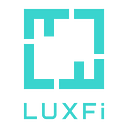Buy A Birkin Hermes or Limited Edition Sneakers with Crypto: A Reality in 2021 with LuxFi
The world of cryptocurrencies is merging with physical goods and services. For a long time, crypto-assets were relegated purely to the realm of the digital economy, that’s no longer the case. Nowadays, people can buy and trade goods and services over the blockchain. The projects tackling this exciting new frontier are at the cutting edge of a new economy. In this article, we’ll discuss some of them.
Asset Tokenization
The action of taking goods and services and bringing them into the blockchain is called tokenization. To accomplish this process the tokenizer of an asset creates a digital token on top of an existing blockchain, a representation of the physical asset. The distributed ledger of a blockchain ensures that the ownership of the good is public.
Assets tokenized on a blockchain become very easy to verify. It is a question of simply showing the token on a crypto wallet, that way ownership of any asset can be easily proved. Not only that but physical assets can be broken down into smaller digital pieces that can be bought by hundreds of people.
What Sorts of Assets are Being Tokenized?
The answer is anything. Basically, blockchain technology allows any sort of good or service to be tokenized and traded over the distributed ledger. There are no limits in this aspect as tokenization can be done on perishable goods, real estate, luxury goods, building materials, travel services, etc.
Of course, the further advantage users have with asset tokenization is that they can buy these tokens with other cryptos. In the world right now, credit card payment networks do most of the heavy lifting when it comes to buying goods and services.
Yet, credit cards are very expensive to use for both the consumer and the vendor. Consumers have to deal with high-interest payments and ID theft insurance. Vendors have high fees for using credit card networks and have to wait up to 30 days to receive payment.
In the case of paying with crypto, the blockchain is global and has no restriction on where it can be used. The fees of paying via a distributed network are just a few cents in the case of BSC or Polygon. Finally, transfer and settlement of the payment happen at the same time, the seller doesn’t need to wait to receive the payment.
Some examples of both assets tokenization and crypto payment platforms are:
- Travala: the site allows people to book both flights and hotels and pay with more than 20 different crypto assets. It’s one of the first sites that support international travel with crypto, and discounts and special promotions are given to those who pay using crypto.
- MasterWorks: the project that allows for the tokenization of artwork. The site auctions art pieces that have been tokenized and fragmented to be sold to the general public. From their platform, people can buy fragments of famous artworks that are kept secured in a vault. Then, these can be traded on a secondary market.
- Italian Wine Crypto Bank: is a special winery that uses NFTs to tokenize their wine collections. Users are able to see via the blockchain the provenance of a particular wine bottle or collection. They can purchase the specialty wine using cryptocurrencies and track its delivery over the blockchain.
Bringing All the Pieces Together
One project that has all the characteristics above mentioned is LuxFi. LuxFi is a blockchain luxury marketplace that accepts cryptocurrency as payments to purchase and invest in high-end bags, limited edition watches, designer jewelry, collectibles and shoes.
LuxFi also tokenizes these luxury items with the use of NFTs. By doing so, the platform allows buyers, sellers and investors the ability to check the authentication of a product, its information and history, and prove the ownership of any asset transacted on the LuxFi marketplace.
LuxFi is one of the most innovative platforms in the crypto space and the luxury industry in general. It’s bringing blockchain technology, NFTs, asset tokenization to the luxury market. They are one of the most promising projects out there and they will accomplish great things with their technology.
Conclusion
The future of the economy is found in asset tokenization. The abilities blockchains bring to the sale of goods and services is a technological leap only seen once every generation. In the years to come, blockchains will change markets even more. No matter what shape it will take, the future of the economy is in adopting blockchain technology.
About LuxFi
LuxFi is the world’s first asset-backed NFT marketplace for luxury assets, where people can buy, sell and invest in luxury assets using cryptocurrencies and traditional payments. We eliminate counterfeiting while minting an NFT on a multi-chain blockchain network, with a focus on luxury assets that hold value well and have a high resale value. Leveraging our big data intelligence system and unique algorithm for automated data collecting and data processing, the value of each NFT on our platform is backed by real-world data.
Stay tuned on our social media channels:
Website: https://www.luxfi.io
Twitter: https://twitter.com/luxfiofficial
Telegram Announcement Channel: https://t.me/luxfinews
Telegram Official Group: https://t.me/Luxfiofficial
Medium: https://luxfiofficial.medium.com
